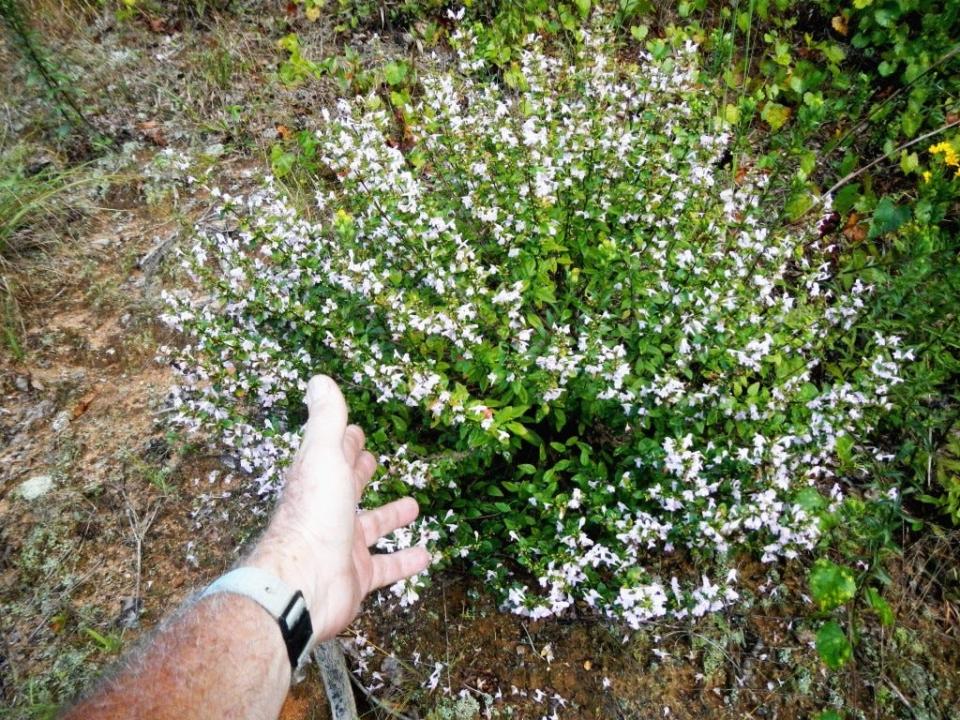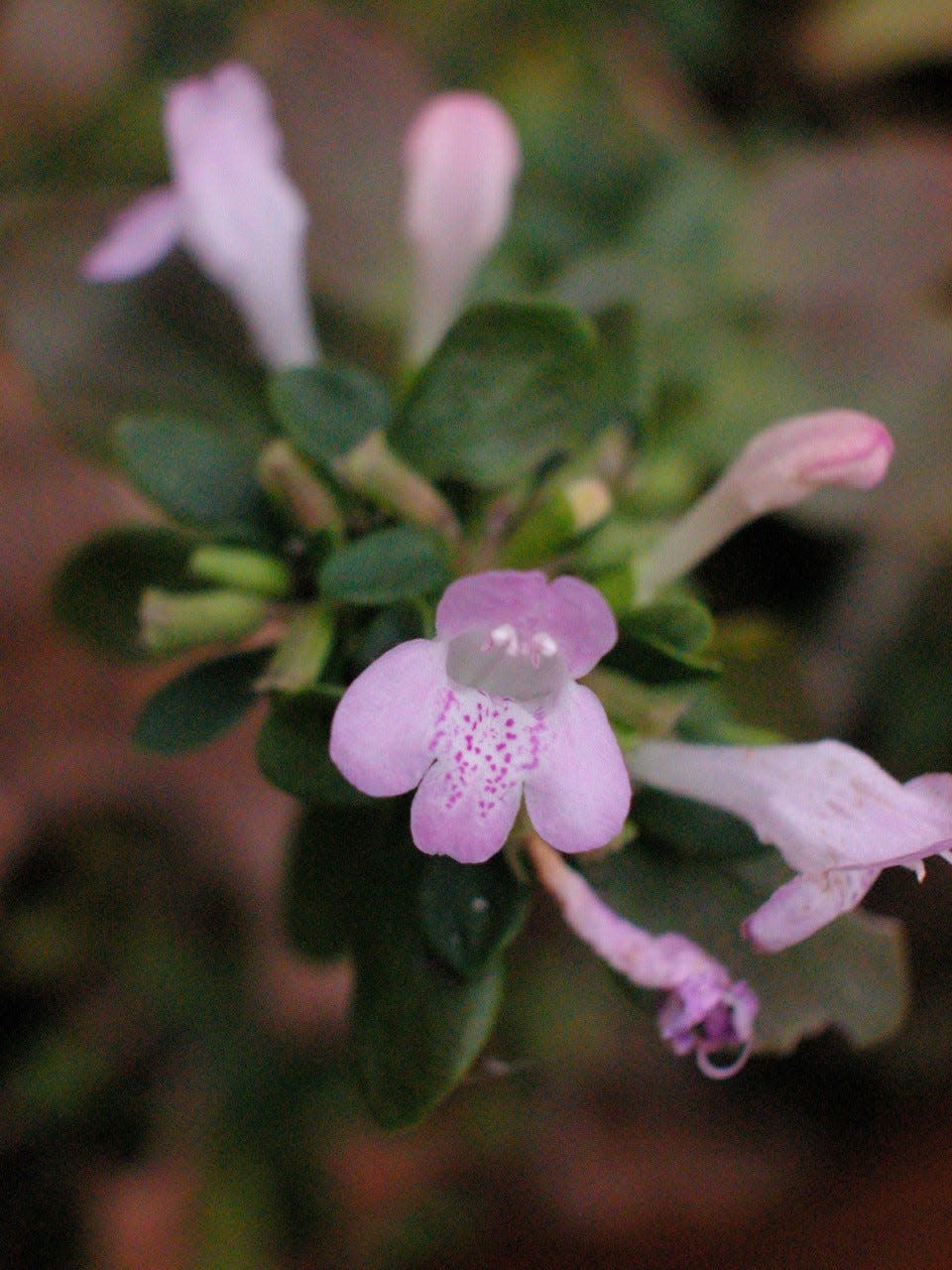Mint family member a pollinator and nice ornamental | Mystery Plant

Despite all this heat, this has been a good summer for our backyard garden. Plenty of sunshine and all those pop-up thunderstorms have been great for the garden goodies (and the weeds as well).
We’re particularly proud of our crop of mint (the genus is Mentha … we have two kinds), the fresh leaves graciously lending themselves to the summer table: a cool tabouli salad, and then there’s the Italian insalata di pomidori of tomatoes, mint and onion, and of course, a tall, icy mojito. Mint: great stuff.
And of course, “mint” is a member of the mint family, named the Lamiaceae. This is a big family, occurring worldwide, and embracing thousands of species. But we must remember that all those species in the mint family are not the garden mint that we know and love. Here’s one to consider, which is not “mint.”
Our Mystery Plant — Georgia savory or Georgia calamint (Clinopodium georgianum) —is something of a shrub (we could say a “subshrub”) featuring woody stems. Doesn’t get very tall, just a couple of feet at most.
Beyond waterlilies: Here's how to beautify your pond, support wildlife with native plants
The beetle battle: Foresters scramble to get ahead of pine tree killers in Wakulla, Franklin
Mystery Plant: This edible tuber has 'roots' in Caribbean nations
This is a native species in the Southeast, known from North Carolina to the Florida Panhandle, and over to Mississippi. Unlike your garden mint, this is a plant of dry, rocky or sandy places. (This is not a plant with wet feet.) Its foliage is quite fragrant, though, and to me gives off a sweet, peppery fragrance when rubbed. Somebody ought to try cooking it with pork chops. I bet it would be great.

This species is starting to bloom now. Its flowers are typical for the mint family: there will be a cluster of flowers at each of the upper stem nodes. All the sepals are fused into a tube, and the petals, too.
The business end of the flower offers a gaping opening provided by the corollas’ upper and lower lip, revealing the tempting nectar way down inside. The corolla is an attractive pink, the lower lip features a crowd of purple speckles. This is a “bee flower,” and attracts a variety bees, mostly small bumblebees, I think.
So, let me tell you about my buddy Dave Schuetrum. He’s a local guy, and a good friend, who seems to be interested in basically everything, especially if it’s alive: bugs, critters, plants, you name it.
Dave can commonly be found on some hunt-club land not so far away, an area that features swamps, river bluffs and fire-maintained pine flatwoods. He likes to go on field trips, which he calls his “rambles,” and he always finds interesting things to consider while stomping around.
I was on one of Dave’s rambles the other day (in the morning, before it got too hot), and we were tooling around in his 4-wheeler along a powerline. It was there that we found this Mystery Plant. There were number of these little shrubs at the woods’ edge, already blooming.
Dave instantly became a fan of it, and now has a great interest in growing some as an ornamental. In fact, young plants are available from native-plant nurseries, and although they are usually short-lived shrubs, would make a great addition to your dry-ground pollinator garden.

John Nelson is the retired curator of the A.C. Moore Herbarium at the University of South Carolina in Columbia, S.C. As a public service, the Herbarium offers free plant identifications. For more information, visit www.herbarium.org or email johnbnelson@sc.rr.com.
This article originally appeared on Tallahassee Democrat: Georgia Savory a shrub mint, pollinator and nice ornamental plant

 generic
generic 